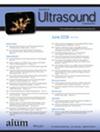Changes in Contrast-Enhanced Ultrasonography Results, Vascular Endothelial Cell Damage, and Oxidative Stress Indicators in Rabbit Models With Varying Degrees of Testicular Injury
Abstract
Objective
It is difficult to quickly assess the degree of testicular injury in patients with blunt testicular trauma, and accurate and rapid assessment of the degree of injury is related to clinical decision-making and treatment outcomes. This study explored the sonographic characteristics of patients with different degrees of blunt testicular trauma via contrast-enhanced ultrasound (CEUS), as well as biomarkers of oxidative stress and vascular endothelial cell injury, to further evaluate the diagnostic value of these parameters in blunt testicular trauma.
Method
New Zealand male rabbits were used to establish blunt testicular trauma models of different degrees, including contusion, hematoma, rupture, and control models.
Routine ultrasound and CEUS were performed immediately, 2, 4, and 6 h after modeling, and pathological examination was used to confirm the modeling results further. The levels of von Willebrand factor (vWF), endothelin-1 (ET-1), reactive oxygen species (ROS), and nitric oxide (NO) in the serum were analyzed.
Results
According to the CEUS results, the arrival time (AT) (F = 35.159, P < .001), time to peak intensity (TTP) (F = 122.434; P < .001), and area under the curve (AUC) (F = 47.444; P < .001) of the time-intensity curves showed significant differences among the groups. There was no significant difference between Hematoma Trauma (HT) (F = 0.178; P = .91) and Peak Intensity (PI) (F = 0.172; P = .92). For biomarkers, there were significant differences in vWF (F = 40.61; P < .001), ROS (F = 106.3; P < .001), NO (F = 79.3; P < .001), and ET-1 (F = 61.94; P < .001) levels among the groups.
Conclusions
For blunt testicular trauma, the AT, TTP, and AUC indices of CEUS can more accurately distinguish the degree of testicular injury. Oxidative stress and endothelial cell damage may also be used as biomarkers for evaluating the degree of testicular injury.

 求助内容:
求助内容: 应助结果提醒方式:
应助结果提醒方式:


